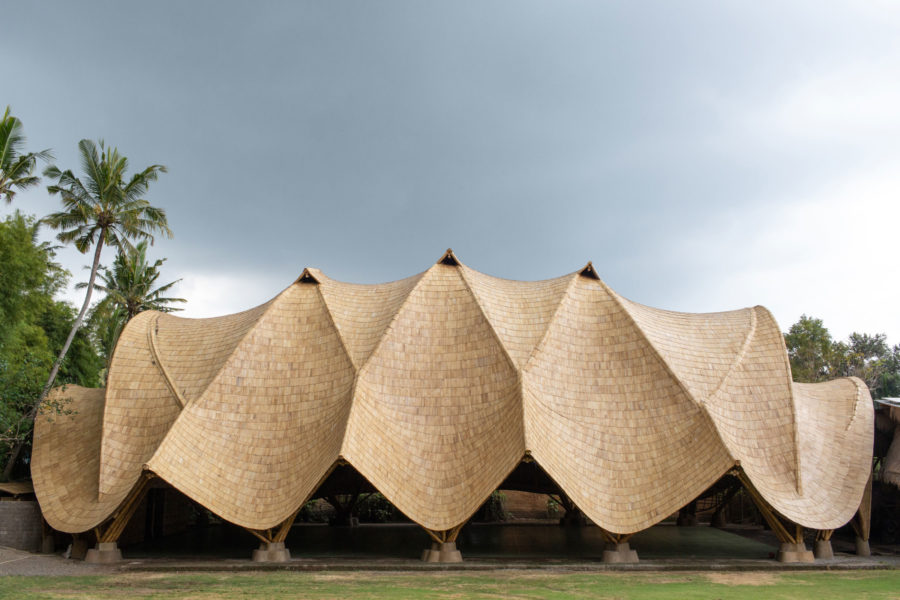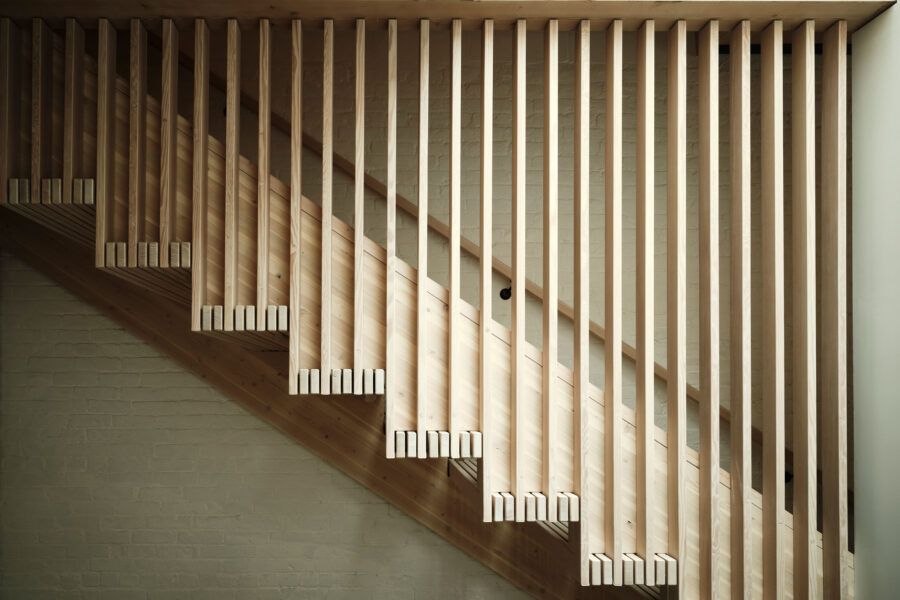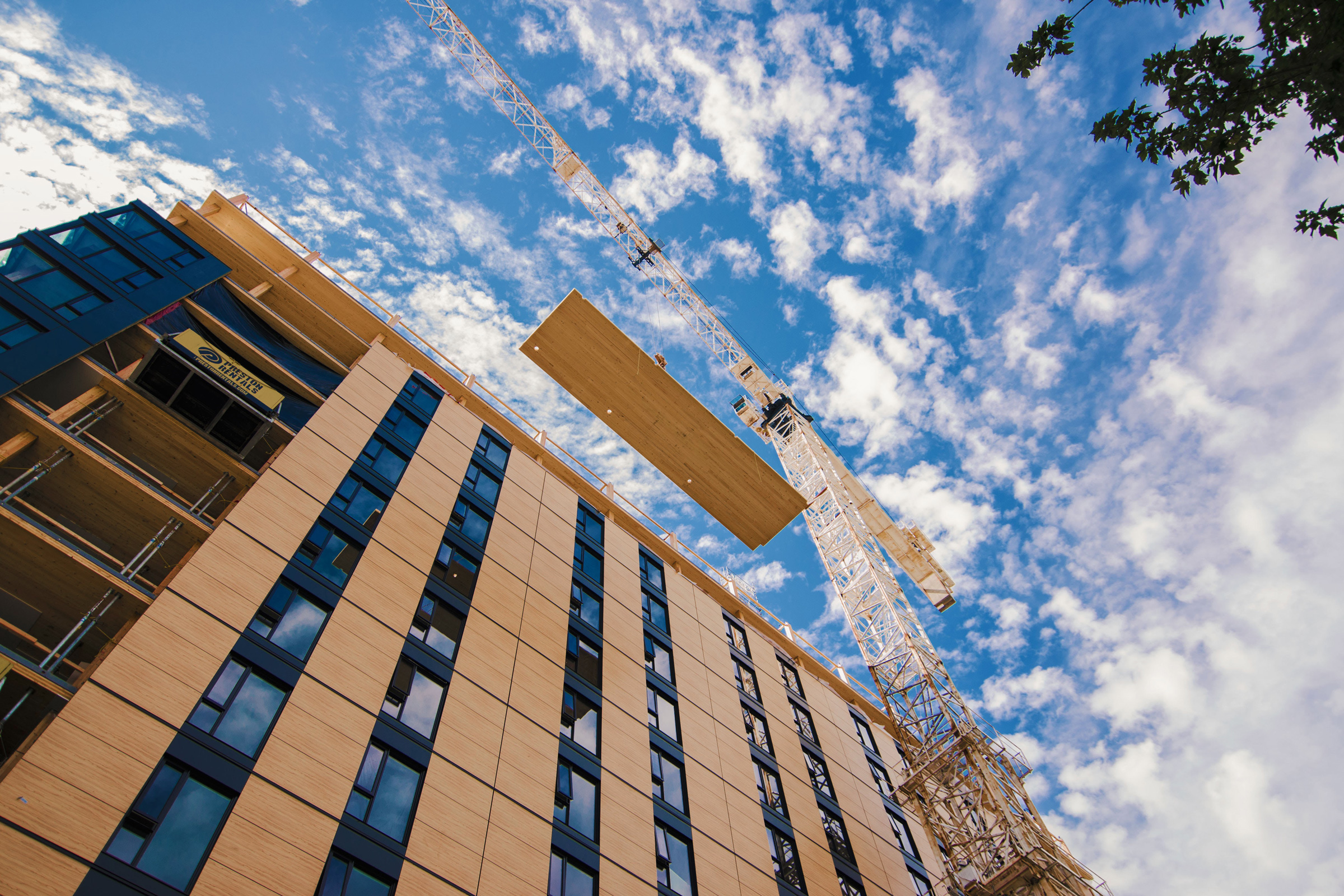Story at a glance:
- Carbon sink building materials remove more carbon emissions from the atmosphere than they emit.
- Examples of carbon sink building materials include hempcrete and mass timber.
- Carbon sink building materials lighten the heavy carbon footprint of the design and building industries.
A life cycle assessment of buildings conducted by RMI showed that 65 to 85% of embodied carbon in buildings—representing up to 9% of total global carbon emissions—comes from raw material extraction, transport, and manufacture. In a similar assessment, WSP Engineering showed concrete production generated almost half of all those emissions spread equally over the construction of walls, roofs, floors, and building frames.
In response to the need to lighten its carbon footprint, design and building industries must find a way to procure and use materials that are either carbon-neutral or actually remove more carbon from the atmosphere than they emit. In the latter case, rather than being carbon sources, these building materials are carbon sinks.
This may sound too good to be true. But, as we’ll see, many carbon sink building materials already exist, but just haven’t been identified as such. Nor have they been commonly used.
Novel carbon sink building materials highlighted below are in development by forward-looking startups whose objective is to mitigate the effects of climate change through carbon sink building materials.
What are Carbon Sink Building Materials?

The Green School in Bali, sometimes referred to as the bamboo school, is a private, international school that teaches pre-K through high school. The campus highlights the natural environment and teaches sustainable practices. Photo by Tommaso Riva
Carbon sink building materials are those that store or sequester more carbon emissions than their production, use, and disposal emit. They act like carbon sponges, pulling carbon dioxide (CO2) out of the air, rendering the materials carbon negative. Consequently carbon sink building materials have comparatively little to no global warming potential (GWP) measured in kgCO2e where e stands for carbon dioxide equivalents and includes other greenhouse gases like methane as well as CO2.
In a world of rapidly increasing carbon emissions that are accelerating climate change, natural carbon sinks are in short supply. For example, the oceans, having already absorbed over one-third of all anthropogenic carbon emissions, are reaching their carbon storage limit. Meanwhile, due to more intense and prolonged wildfires as well as greater rates of deforestation, forests and their soils, typically responsible for absorbing 30% of carbon emissions, are slowly becoming carbon sources.
Using building materials as carbon sinks can complement these failing natural carbon sinks while also decreasing the construction industry’s heavy carbon footprint. In this manner, carbon sink building materials represent a win for the planet as well as a win for the designer and building industries.
Bio-based materials like hemp and bamboo are excellent examples of carbon sink building materials. They have high carbon storage capacity locked in their biomass. Once transformed into building materials their carbon becomes stored in solid form for the lifetime of those buildings.
Do Carbon Sink Building Materials Have Embodied Emissions?
In terms of embodied emissions, carbon sink building materials have significantly fewer than conventional building materials because there is little or no extraction and transport of raw materials to formulate products composed of them.
It’s important to note that the carbon in biogenic carbon sink building materials like wood will eventually be released to the atmosphere as carbon dioxide at the building’s end-of-life unless they are recycled.
At some future time after that, all-natural building materials can be composted, in which case some of its carbon will cycle back to nature and be reused while the rest will end up as carbon dioxide emissions. On the other hand composite carbon sink building materials made with some synthetic materials will likely be incinerated or landfilled. So sequestered carbon in carbon sink building materials offset carbon emissions temporarily rather than definitively for all time.
How are Carbon Sink Building Materials Designed?
The creation of carbon sink building materials is based on one or more of the following principles:
- Keeping extraction of raw supplies to a minimum
- Eliminating energy-intensive manufacture
- Transitioning to sustainable materials
- Decarbonizing traditional processes or commodities (e.g., steel, cement, aluminum)
Because most carbon sink building materials are plant-based, they are sustainable (Principle 3). Being naturally regenerative, there is no high-energy mining involved (Principles 1 and 2). In cases where they may be used in conjunction with traditional materials, they decarbonize either the manufacturing process or the final product (Principle 4).
Why are Carbon Sink Building Materials Important?
Carbon sink building materials represent a way the design and building industries can lead their own sectors away from being major carbon emitters and toward being carbon-neutral overall in which there is no net gain or loss of carbon emissions.
The ultimate goal, however, is to reduce or eliminate all carbon-intensive products—such as concrete and steel—and replace them with carbon-negative materials that take back more carbon than they give off.
When designers and builders include carbon sink building materials into their work, they are helping create the carbon-free future on which life and human civilization depend in the age of climate change.
Examples of Carbon Sink Building Materials

Glue-laminated Douglas fir forms the central stairwell that connects the three floors of Aaron Schiller’s Brooklyn Mass Timber House. Photo by Frank Frances
Technological innovation in carbon sink building materials has created a wide variety of options for the builder and designer at all stages of the construction process. Whatever your project specifications, one or more of the following carbon sink building materials are sure to meet many, if not all, of your requirements.
Hempcrete
Also known as Lime Hemp Concrete (LHC), hempcrete shows promise as a sustainable alternative to conventional concrete for some applications—like load-bearing walls—in terms of energy usage and carbon emissions. A recent study concluded that LHC made with unfired binders instead of lime generated up to 90% fewer carbon emissions than standard LHC. Currently there are only a few companies who produce hempcrete.
Although the term green concrete may be associated with hempcrete since it’s from a living plant, any concrete that is composed of recycled materials is considered green.
Mass Timber
Also commonly referred to as Cross Laminated Timber (CLT), mass timber is another eco-friendly alternative to concrete that may be used in floors, walls, ceilings, and roofs. In a simulation study substituting conventional concrete floors in steel building frames with CLT panels, projections done over a 30-year period showed on average a 50 Mt CO2e reduction (not counting carbon sequestration from the trees). The investigators point out that this particular substitution would have an immediate effect on reducing carbon emissions because it requires no new technology or advanced training of workers involved in installation.
Mass timber is viewed by many designers like Aaron Schiller—founder and lead designer of the New York City-based architectural design firm Schiller Projects—as an ideal choice if you’re interested in long-term sustainability. “What drove us was the capacity to minimize the carbon footprint of the materials we were putting into the building,” Schiller previously told gb&d.
Bricks
With less than 5% of the embodied carbon of traditional clay-fired bricks and composed of more than 90% of recycled demolition waste, K-Bricks by Kenoteq are one of the latest innovations in this popular building material. Bricks from biochar—usually made with agricultural or food waste—are another carbon-negative brick option. Biochar bricks are usually softer than standard bricks, so they won’t work in all building applications.
Bricks have an added advantage, too, according to Stan McCarthy, senior vice president of sales at Acme Brick, a Texas-based brick company with a 100-year history. “Brick is one of the few materials that building codes allow to be reused in the building application, if it meets ASTM standards,” McCarthy previously told gb&d.
Plantd
Made of 97% perennial grass grown in North Carolina and 3% composite resin, Plantd panels offer a carbon-negative alternative ideal for wall sheathing and roof decking. In laboratory strength trials, Plantd performed 1.4 times better than OSB, and resisted water twice as well.
CarbiCrete
As a carbon-negative concrete replacement, CarbiCrete replaces cement with steel slag. After mixing with aggregate and water, it’s placed in brick molds where it forms CMUs. Finally, it’s cured by injecting carbon dioxide which reacts with lime to form calcium carbonate. Compared with standard concrete, CarbiCrete CMUs are the same or better in terms of mechanical properties and durability. There is no difference between them in water absorption properties. CarbiCrete exhibits up to 30% greater compressive strength and better freeze/thaw resistance.




